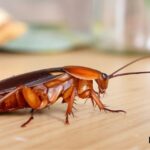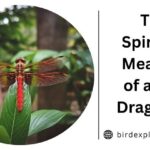In the diverse landscapes of the Golden State, from coastal cliffs to alpine meadows, a palette of blue-hued avian wonders awaits. California’s blue birds aren’t just a feast for the eyes; they’re a testament to nature’s artistry and adaptability. Whether you’re a seasoned birder or a casual nature enthusiast, this guide will introduce you to the sapphire songsters that call California home. Let’s spread our wings and dive into the world of these azure beauties!
Setting the Scene: California’s Avian Palette
Why do blue birds captivate us so? Perhaps it’s their sky-like hue, a color rarely found in nature, that draws our gaze and sparks our imagination. In California, the diverse habitats create a perfect stage for a blue bird bonanza. From the misty redwood forests to the sun-baked deserts, each ecosystem harbors its own unique blue-feathered residents.
“In all things of nature there is something of the marvelous.” – Aristotle
This quote rings especially true when observing the varied blue birds of California. Their adaptations to different environments showcase nature’s ingenuity and resilience.
Top 12 Blue Birds in California
1. Western Bluebird
Appearance: The Western Bluebird (Sialia mexicana) is a vision in azure and rust. Males sport a vibrant blue head, wings, and tail, complemented by a rusty breast. Females are more subdued but equally charming with grayish-blue wings and tail.
Habitat: These delightful birds favor open woodlands, orchards, and parklands. You’ll often spot them perched on fence posts or low branches, scanning the ground for their next meal.
Diet: Western Bluebirds are insect-loving acrobats. They’re known for their “drop and pounce” hunting style, snatching up grasshoppers, caterpillars, and beetles with impressive precision.
Fun Fact: Western Bluebirds nest in cavities and easily adapt to artificial nest boxes. By putting up a bluebird house, you might attract these azure beauties to your own backyard!

2. Mountain Bluebird
Appearance: The Mountain Bluebird (Sialia currucoides) is a sky-blue marvel. Males are an ethereal, almost turquoise blue all over, while females display a more subtle gray-blue plumage.
Habitat: True to their name, these birds favor high-elevation environments. Look for them in alpine meadows, sagebrush plains, and open coniferous forests of the Sierra Nevada.
Diet: Like their Western cousins, Mountain Bluebirds are primarily insectivores. They’ll hover mid-air to snatch flying insects, a behavior unique among bluebirds.
Migration: Mountain Bluebirds are altitudinal migrants. In winter, they’ll descend to lower elevations, sometimes appearing in unexpected places like desert scrublands.

3. California Scrub-Jay
Appearance: Don’t mistake this bird for your average blue jay! The California Scrub-Jay (Aphelocoma californica) sports a blue head, wings, and tail, with a grayish-brown back and pale underparts.
Habitat: These birds are masters of the chaparral and oak woodlands. They’re adaptable creatures, equally at home in urban parks as they are in wild scrublands.
Diet: Scrub-Jays are omnivorous opportunists. Their menu includes everything from acorns and pine nuts to small reptiles and nestling birds. They’re known for their caching behavior, storing food for later use.
Intelligence: California Scrub-Jays are among the most intelligent birds in North America. They’ve been observed planning for the future, a cognitive ability once thought unique to humans.

4. Steller’s Jay
Appearance: With their punk-rock crest and bold blue and black plumage, Steller’s Jays (Cyanocitta stelleri) are hard to miss. Their deep blue body contrasts sharply with their black head and crest.
Habitat: These birds are the sentinels of coniferous forests. You’ll find them in pine, fir, and redwood forests across California, often announcing their presence with harsh, scolding calls.
Diet: Steller’s Jays are nature’s hoarders. They cache seeds and nuts for later consumption, playing a crucial role in forest ecology by inadvertently planting trees.
Behavior: Known for their boldness, Steller’s Jays often frequent campgrounds, unafraid to swoop in for unattended food. They’re also excellent mimics, capable of imitating hawks to scare away competition.

5. Pinyon Jay
Appearance: The Pinyon Jay (Gymnorhinus cyanocephalus) is a subtle blue nomad. Their overall blue plumage is paler and more uniform than other jays, lacking the stark contrasts of their cousins.
Habitat: These birds are specialists of the pinyon-juniper woodlands in eastern California’s high deserts. Their entire life cycle is intimately tied to these unique ecosystems.
Diet: As their name suggests, Pinyon Jays have a special relationship with pinyon pines. They’re adapted to extract and cache pinyon seeds, playing a crucial role in forest regeneration.
Social Structure: Unlike many birds, Pinyon Jays live in large, cooperative flocks year-round. These “villages” can number in the hundreds, working together to find food and raise young.

6. Blue Grosbeak
Appearance: Male Blue Grosbeaks (Passerina caerulea) are a deep, rich blue with rusty wing bars. Females are warm brown with hints of blue, both sexes sporting large, conical beaks.
Habitat: Look for these beauties in brushy fields, along stream edges, and in open woodland borders. They prefer areas with scattered trees and shrubs for nesting.
Diet: Their powerful beaks are perfectly adapted for cracking seeds, but during breeding season, they switch to a protein-rich insect diet.
Song: The Blue Grosbeak’s song is a rich, warbling melody often described as sounding like a “happy” American Robin. Listen for it in the early morning or late evening.

7. Lazuli Bunting
Appearance: Male Lazuli Buntings (Passerina amoena) are a painter’s dream: turquoise head and back, rusty breast band, and white belly. Females are a more subtle grayish-brown.
Habitat: These summer visitors favor shrubby slopes and stream-side thickets. In California, they’re often found in foothill chaparral and along the edges of mountain meadows.
Diet: Lazuli Buntings have a varied diet of seeds, berries, and insects. During breeding season, they rely heavily on insects to feed their growing chicks.
Migration: These birds are long-distance migrants, traveling from California to Mexico and Central America for the winter. Their journey is a testament to the resilience of these small, jewel-like birds.

8. Tree Swallow
Appearance: Tree Swallows (Tachycineta bicolor) are glossy blue-green above and pure white below. Their iridescent plumage shimmers in the sunlight as they swoop and dive.
Habitat: These adaptable birds can be found near wetlands, in mountain meadows, and even in urban areas.
Diet: True aerial insectivores, Tree Swallows catch nearly all their food on the wing. They’re particularly fond of flies, beetles, and flying ants.
Winter Behavior: Unlike many insect-eating birds, some Tree Swallows remain in California year-round. In winter, they switch to a diet of bayberries and other small fruits.

9. Barn Swallow
Appearance: Barn Swallows (Hirundo rustica) are easily identified by their deeply forked tails and glossy blue-black upperparts contrasting with cinnamon-colored underparts.
Habitat: These birds frequently build their nests in and near human-made structures such as barns, bridges, and culverts. They’re also found near open water and fields.
Diet: Agile flycatchers, Barn Swallows consume a variety of flying insects. They often feed low over water or fields, snatching insects just above the surface.
Nesting: Barn Swallows are master builders, constructing cup-shaped nests from mud pellets and grass. Both parents work together to build the nest and raise the young.

10. Purple Martin
Appearance: Purple Martins (Progne subis) are the largest swallows in North America. Males are a glossy, deep purple-blue all over, while females are grayer with some purple sheen.
Habitat: In western North America, Purple Martins often nest in natural cavities in trees or cliffs. Nonetheless, they easily adapt to artificial martin houses, particularly in eastern areas.
Diet: These birds are voracious insect eaters, consuming a variety of flying insects including dragonflies, moths, and flies. They’re known for their graceful, sweeping flight as they hunt.
Conservation: Purple Martin populations have declined in some areas due to competition from introduced species like European Starlings. Conservation efforts often focus on providing suitable nesting sites.

11. California Quail
Appearance: While not typically considered a blue bird, the California Quail (Callipepla californica) sports a lovely blue-gray plumage that earns it a spot on our list. Their distinctive forward-curving head plume is unmistakable.
Habitat: These charismatic birds are adaptable, found in chaparral, oak woodlands, and even urban parks and gardens.
Diet: California Quail are ground foragers, eating a variety of seeds, leaves, and insects. They’re often seen scratching at the soil in search of food.
Social Behavior: These birds are highly social, often seen in coveys of 10-200 individuals. Their distinctive “chi-ca-go” call is a common sound in California’s wildlands and suburbs alike.

12. Blue Bird Bonanza

Coastal Hotspots
Point Reyes National Seashore: This diverse area hosts a variety of blue birds, from Tree Swallows in the wetlands to Western Bluebirds in the grasslands.
Big Sur: The rugged coastline and diverse habitats make this a prime spot for spotting Steller’s Jays and occasionally Lazuli Buntings during migration.
Mountain Meccas
Yosemite National Park: Home to Mountain Bluebirds, Western Bluebirds, and Steller’s Jays. The high meadows are particularly good for bluebird watching.
Mount San Jacinto State Park: Look for Mountain Bluebirds and Lazuli Buntings in the high-elevation meadows during summer months.
Unlikely Urban Havens
Golden Gate Park, San Francisco: Despite its urban setting, this large park hosts Western Bluebirds and occasionally Barn Swallows.
Sepulveda Basin Wildlife Reserve, Los Angeles: This urban oasis is a good spot for Tree Swallows and Western Bluebirds.
Seasons of Blue: Migration Patterns and Timing
Understanding the seasonal movements of California’s blue birds can greatly enhance your birdwatching experience. Here’s a quick guide:
| Season | Resident Birds | Arriving Migrants | Departing Migrants |
| Spring | Western Bluebird, California Scrub-Jay, Steller’s Jay | Lazuli Bunting, Blue Grosbeak | – |
| Summer | All residents plus summer visitors | – | – |
| Fall | Year-round residents | – | Lazuli Bunting, Blue Grosbeak, some swallows |
| Winter | Year-round residents, some Mountain Bluebirds at lower elevations | – | – |
Conservation: Keeping California Blue
The future of California’s blue birds depends on our conservation efforts. Here are some of the challenges they face and how you can help:
Threats
- Habitat Loss: Urban development and agriculture are reducing suitable habitats for many species.
- Climate Change: Shifting temperatures and precipitation patterns are affecting food sources and breeding cycles.
- Invasive Species: Non-native birds and insects can outcompete native species for resources.
How You Can Help
- Create Backyard Habitats: Plant native species and provide water sources to attract blue birds to your yard.
- Participate in Citizen Science: Join projects like eBird to help track bird populations and movements.
- Support Conservation Organizations: Donate to or volunteer with groups working to protect bird habitats in California.
Wrap-up: The Joy of Blue Birding in the Golden State
From the coastal bluffs to the mountain peaks, California’s blue birds add splashes of azure to the Golden State’s diverse landscapes. Each species, with its unique adaptations and behaviors, tells a story of evolution and resilience. As you explore California’s wild and urban spaces, keep an eye out for these feathered blue wonders. They’re not just beautiful to look at; they’re integral parts of their ecosystems and indicators of environmental health.
Remember, responsible bird watching enhances both your experience and the birds’ well-being. Maintain a respectful distance, avoid disturbing nesting sites, and always follow local guidelines and regulations.
So grab your binoculars, head outdoors, and immerse yourself in the azure wonders of California’s avian world. Who knows? You might just develop a case of the blues – the joyful, feathered kind!

Kay Lovely is a dedicated writer for Bird Explore, where she brings the latest celebrity news and net worth updates to life. With a passion for pop culture and a keen eye for detail, Kay delivers engaging and insightful content that keeps readers informed about their favorite stars. Her extensive knowledge of the entertainment industry and commitment to accuracy make her a trusted voice in celebrity journalism.







